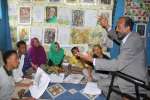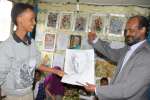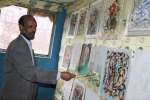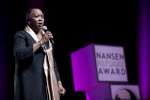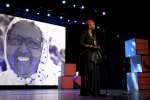High Commissioner's Global Initiative on Somali Refugees - Reading List
Conferences/Meetings, 10 September 2014
High Commissioner’s Global Initiative on Somali Refugees – Reading List
The publications signposted here are a brief and introductory list for the High-Level Panel members who may wish to read more about various aspects of the Somali refugee problematic. The list also gives some readings from other contexts, as these could help illuminate our examination of the Somali situation. Please note that the literature is much more exhaustive than this list, as only readings which are freely accessible online have been noted here.
The Somali Refugee Experience
- Moret, J. et al 2006. The Path of Somali Refugees into Exile: A Comparative Analysis of Secondary Movements and Policy Responses. Geneva: SFM
- Lindley, A. and Haslie, A. (2011) 'Unlocking protracted displacement: Somali case study', RSC Working PaperSeries No. 79
- Lindley, A. (2009) 'Crisis and Displacement in Somalia', Forced Migration Review No. 33
- Morris, T. (2010) 'Urban Somali Refugees in Yemen', Forced Migration Review No. 34
Clans in Somalia
- Austrian Red Cross and ACCORD (2009). Clans in Somalia
- Minority Rights Group. 2010. 'No Redress: Somalia’s Forgotten Minorities,'
Refugee views on return
- Danish Refugee Council and Norway Refugee Council (2013). Durable Solutions: Perspectives of Somali Refugees Living in Kenyan and Ethiopian Camps and Selected Communities of Return
- Heritage Policy Institute (2013). Hasty Repatriation
Role of the Private Sector
- Cassanelli, Lee (2010), 'Private sector peacemaking: Business and Reconstruction in Somalia.'
- Omata, N. (2012). Refugee Livelihoods and the Private Sector: Ugandan Case Study; Refugee Studies Centre
- Omata, N and Kaplan, J (2013). Refugee livelihoods in Kampala, Nakivale and Kyangwali refugee settlements: patterns of engagement with the private sector; Refugee Studies Centre
Transnationalism and Somali diaspora
- Galipo, Adele (2011) Diaspora and Peacebuilding in Post-conflict Settings: Insights from Somaliland. European Conference on African Studies
- Food Security and Nutrition Analysis Unit – Somalia (2013). Family Ties: Remittances and Livelihoods Support in Puntland and Somaliland Case Study
- Hammond, Laura, Mustafa Awad, Peter Hansen, Cindy Horst, Ken Menkhaus, Lynette Obare. 2011. Cash and Compassion, the Role of the Somali Diaspora in Relief, Development and Peace-building
- Hammond, Laura 2013. 'Somali Transnational Activism and Integration in the UK: Mutually Supporting Strategies,' Journal of Ethnic and Migration Studies
- Orozco, M. and Yansura, J. (2013). Keeping the Lifeline Open: Remittances and Markets in Somalia
Other Protracted Refugee Situations
- Forced Migration Review Number 33: Protracted Displacement
- Milner, J. Loescher, G. (2011) Responding to Protracted Refugee Situations. Refugee Studies Centre
- Misselwitz, P. and Hanafi, S. (2010). Testing a New Paradigm: UNRWA’S Camp Improvement Programme
- Refugee Studies Centre: The PRS Project – Bibliography
- Refugee Studies Centre: The PRS Project – case studies
Refugee self-reliance
- Hunter, M. (2009) The Failure of Self-Reliance in Refugee Settlements, Police Journal Vol 2
- IRIN news (February 2013) . Refugees Aim for Self-Reliance, not Hand-outs
- Meyer, S (2006). The 'refugee aid and development' approach in Uganda: empowerment and self-reliance of refugees in practice
- Scott, Anna (July 2013). Investing in refugees: New solutions for Old Problems, The Guardian
- UNHCR. Livelihoods and Self-Reliance




















